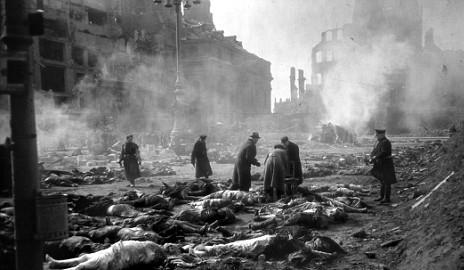
Part 2 - When a City is Carpet bombed, Only the Strongest Structures Survive
Dresden is a beautiful, historic German city located near the borders of Poland and Czech republic. During the early 20th century, Dresden came into prominence as a major manufacturing center and communication hub. More than commerce, the city became a leading center for science, art, theater and classical music in Europe. It was known for its pleasant university life, graceful architecture, splendid lakes and gardens.

Dresden survived mostly intact during WW II and was deemed as a safe city, so much so that over half million refugees poured into it from other destroyed areas. After all what strategic interest does a harmless university town have?
That illusion of safety changed on Valentine’s day of 1945, when the British and American Air forces dropped over 2700 tons of bombs to entirely destroy the historic center of the city. The bombing was controversial, because it was targeted specifically on the civilian areas and seemed to have killed many Polish refugees trying to flee horrors of war in their own country. There had been long running controversy over how many people were killed, and whether the targeting of civilians was to be considered a war-crime.

Kurt Vonnegut, the famous American author, survived miraculously from the Dresden campaign. While he was a chemistry student at Cornell, Vonnegut was enlisted by US Army and was sent to war in the European theater. He was captured as a POW and was imprisoned at an underground slaughterhouse meat locker in Dresden on that fateful night. Although his underground ‘bunker’ saved him from the bombing, when he came out, he saw utter destruction everywhere he looked at. The experience affected him profoundly all his life, and he immortalized it in his classic novel ‘Slaughterhouse Five’.
How does it relate to the biology we plan to cover here? Very little, I would say, but I thought our dear readers would not mind a bit of historical digression. Also, please remember the title - ‘When a City is Carpet bombed, Only the Strongest Structures Survive.’ It is a good analogy for the science we expect to cover.
In the next commentary of this series, we shall discuss Part 3 GC Distribution of Genomes (Casual).